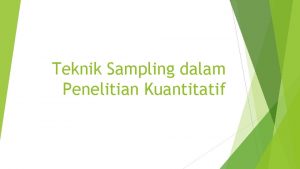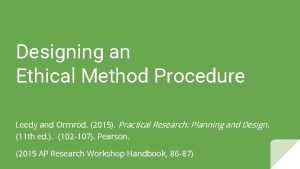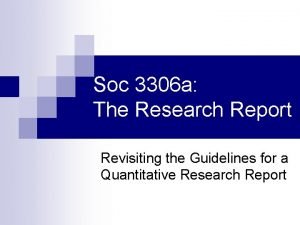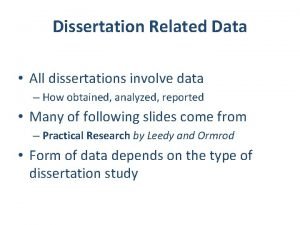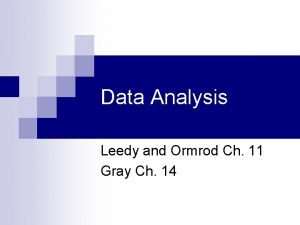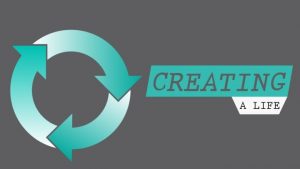The Research Design Whats a RESEARCH DESIGN Leedy
















- Slides: 16

The Research Design

What’s a RESEARCH DESIGN • Leedy (1997: 195) defines research design as a plan for a study, providing the overall framework for collecting data. • Mac. Millan and Schumacher (2001: 166) define it as a plan for selecting subjects, research sites, and data collection procedures to answer the research question(s). • it constitutes the blueprint for the collection, measurement and analysis of data (Selltiz et al, 1962). • It is the arrangement of conditions for collection and analysis of data • It is the conceptual structure within which research is conducted; it constitutes the blueprint for the collection, measurement and analysis of data. • It is a strategic framework for action that serves as a bridge between research questions and the execution, or implementation of the research strategy

As such the RD includes an outline of what the researcher will do from writing the questions up to the final analysis of data. More explicitly, the design decisions happen to be in respect of: • • • What is the study about? Why is the study being made? What will be the sample? Where can the required data be found? Where will the study be carried out? What periods of time will the study include? What type of data is required? What techniques of data collection will be used? How will the data be analyzed? In what style will the report be prepared?

Importance of RD • To provide results that are judged to be credible. For Durrheim (2004: 29), • helps to decide upon issues like what, when, where, how much, by what means etc. • It facilitates the smooth conduct of the various stages of research. • It contributes to making research as efficient as possible--maximum information with minimum effort, time and expenditure. • It helps to plan in advance, the methods to be employed for collecting the relevant data and the techniques to be adopted for their analysis. • It help in pursuing the objectives of the research in the best possible manner, provided the available staff, time and money are given. • It provides an outline of what the researcher is going to do in terms of framing the hypothesis, its operational implications and the final data analysis.

Components of a RD The overall research design may be divided into the following (Kothari 1988): a) The sampling design that deals with the method of selecting items to be studied for the selected study b) The study design that relates to the conditions under which the study is to be made; c) The statistical design that concerns with the question of how many items are to be observed, and how the information and data gathered are to be analyzed; and d) The operational design that deals with the techniques by which the procedures specified in the sampling, statistical and observational designs can be carried out.

Features of Research Design The important features of Research Design may be outlined as follows: • Type of Data intended • Study sample and sampling techniques • Place and time frames (monetary budget and resources) • Methods of Data Collection (Tools) • Methods of Data Analysis • Steps to be taken to get the plan excuted

Characteristics of a Good RD • flexible, suitable, efficient, economical. • It minimizes bias and maximizes the reliability of the data collected analysed is considered a good design (Kothari 1988). • A research design which does not allow even the smallest experimental error • It yields maximum information and provides an opportunity of viewing the various dimensions of a research problem

Types of RDs • • Historical Research Design Case and Field Research Design Descriptive or Survey Research Design Survey research design Correlational or Prospective Research Design Experimental Research Design Quasi Experimental Research Design

DATA COLLECTION • Is the process of gathering and measuring information on targeted variables in an established systematic fashion, which then enables one to answer relevant questions and evaluate outcomes. • While methods vary by discipline, the emphasis on ensuring accurate and honest collection remains the same. • The goal for all data collection is to capture quality evidence that then translates to rich data analysis and allows the building of a convincing and credible answer to questions that have been posed.

Types of Data collection Tools • • Primary data collection tools Secondary data collection tools

Tools Of Collecting Primary Closed Data ended Questionnaires Quantitative Primary Data Surveys Tests /measures Observation Interviews Qualitative Obsevation Content analysis/discourse analysis

Secondary Data Collection tools • Secondary data means data that are already available i. e. , they refer to the data which have already been collected analysed by someone else. • When the researcher utilises secondary data, then he has to look into various sources from where he can obtain them. In this case he is certainly not confronted with the problems that are usually associated with the collection of original data. • Books , Records , Biographies , Newspapers , Published censuses or other statistical data , Data archives , Internet articles , Research articles by other researchers (journals), Databases, etc. • The sources of unpublished data are many; they may be found in diaries, letters, unpublished biographies and autobiographies and also may be available with scholars and research workers

The researcher, before using secondary data, must see that they possess following characteristics: • Reliability of data: The reliability can be tested by finding out such things about the said data: (a) Who collected the data? (b) What were the sources of data? (c) Were they collected by using proper methods (d) At what time were they collected? (e) Was there any bias of the compiler? (t) What level of accuracy was desired? Was it achieved ? • Suitability of data • Adequacy of data

SELECTION OF APPROPRIATE METHOD FOR DATA COLLECTION • • The Research Problem and Questions Purpose and Scope of Enquiry Availability of Time Availability of Resources Sources of Information Method of Data Collection Level of Precision required Personal Experiences

Ethical considerations for DATA Collection • Introduce your self, your school/university /organization, and reason for collecting data when you ask them if they would like to participate. • You should have permission from participants , and they should be made aware that their involvement is voluntary. Participants are free to withdraw from any active data collection or intervention program at any point without pressure or fear of retaliation. • Avoid or minimize anything that will cause physical or emotional harm to participants. Make participants aware of any potential harms prior to their participation. • Try to remain neutral and unbiased. Don’t let your personal preconceptions or opinions interfere with the data collection process.

Ethical considerations for DATA Collection • Avoid taking advantage of easy to access groups simply because they are there (this is called “convenience sampling”). Data should be collected from those that most help us answer our questions. • Be respectful of people’s time and when possible, compensate them for it. • Be sure to protect the data you collect from people. Do not leave anything with personal information in a place that can easily be accessed by people who do not need to see the data (e. g. the back seat of your car). If possible, keep the information in a secure, or locked location. • After data are analyzed it is always good to share the results back to the participants. • Collecting data (i. e. through surveys) is often done under the assumption that information provided is confidential and the findings will be anonymous. You should let participants know when you will have to break confidentiality (e. g. in the case of harm to themselves or someone else) and whether results will be anonymous or not.
 Rumus paul leedy
Rumus paul leedy Leedy and ormrod 2015
Leedy and ormrod 2015 Grace and leedy
Grace and leedy Leedy 1997
Leedy 1997 Leedy
Leedy Leedy
Leedy Hát kết hợp bộ gõ cơ thể
Hát kết hợp bộ gõ cơ thể Ng-html
Ng-html Bổ thể
Bổ thể Tỉ lệ cơ thể trẻ em
Tỉ lệ cơ thể trẻ em Gấu đi như thế nào
Gấu đi như thế nào Glasgow thang điểm
Glasgow thang điểm Chúa yêu trần thế alleluia
Chúa yêu trần thế alleluia Kể tên các môn thể thao
Kể tên các môn thể thao Thế nào là hệ số cao nhất
Thế nào là hệ số cao nhất Các châu lục và đại dương trên thế giới
Các châu lục và đại dương trên thế giới Công thức tính độ biến thiên đông lượng
Công thức tính độ biến thiên đông lượng
